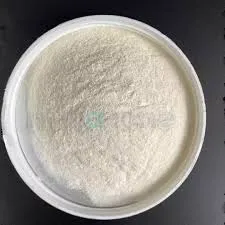
Dec . 04, 2024 09:13 Back to list
hpmc gelation temperature
HPMC Gelation Temperature Understanding the Dynamics of Hydroxypropyl Methylcellulose
Hydroxypropyl methylcellulose (HPMC) is a versatile cellulose ether widely utilized in various industries, including pharmaceuticals, food, cosmetics, and construction. One of its critical properties is its gelation temperature, which significantly influences its applications. Understanding the factors affecting HPMC gelation temperature is essential for optimizing formulations and ensuring the desired performance of products.
What is Gelation Temperature?
Gelation temperature refers to the specific temperature at which a substance transitions from a liquid state to a gel-like consistency. For HPMC, this temperature can vary depending on several factors, including the degree of substitution, concentration, molecular weight, and the presence of other components in the formulation.
HPMC is soluble in cold water and forms a gel upon heating. The phenomenon is typically a result of hydrophobic interactions and hydrogen bonding among polymer chains. As the temperature increases, the mobility of the polymer chains changes, eventually leading to a network formation that results in gelation.
Factors Affecting Gelation Temperature
1. Degree of Substitution HPMC comes in different grades, distinguished by their degree of methyl and hydroxypropyl substitution. The degree of substitution affects the solubility and gelation behavior of HPMC. Higher degrees of substitution generally lead to lower gelation temperatures due to increased hydrophobic interactions, which promote gel formation at lower temperatures.
hpmc gelation temperature

2. Concentration The concentration of HPMC in solution significantly influences its gelation properties. As the concentration increases, the chances of polymer chain entanglement rise, leading to a more robust gel structure. Higher concentrations also shift the gelation temperature to higher values, meaning a larger thermal input is required to achieve gelation.
3. Molecular Weight The molecular weight of HPMC affects viscosity and gelation temperature. Higher molecular weight HPMC tends to form more stable gels at lower concentrations due to enhanced hydrophobic interactions. Conversely, lower molecular weight grades may require higher concentrations to achieve similar gelation properties.
4. Additives The presence of other substances, such as salts, surfactants, or other polymers, can significantly alter the gelation temperature of HPMC. For example, the addition of electrolytes can screen the intermolecular forces, potentially lowering the gelation temperature. Likewise, surfactants can disrupt the gelation process depending on their concentration and type.
5. pH and Ionic Strength The pH of the solution and its ionic strength can also affect the gelation temperature. Variations in pH can lead to protonation or deprotonation of functional groups on the HPMC molecules, thus influencing their hydrophobicity. Ionic strength impacts the interactions among HPMC molecules, with higher ionic strengths generally promoting gelation at lower temperatures.
Applications of HPMC Gelation Behavior
The unique gelation properties of HPMC make it a preferred choice in various applications. In the pharmaceutical industry, it is used for controlled drug delivery systems and as a thickening agent in topical formulations. In the food industry, HPMC acts as a stabilizer and emulsifier, helping to improve texture and shelf life. Furthermore, in cosmetics, it provides a desirable consistency and enhances product performance.
In conclusion, understanding the gelation temperature of HPMC is crucial for its effective utilization across various sectors. By manipulating the influencing factors such as degree of substitution, concentration, molecular weight, and the presence of additives, formulators can tailor the gelation properties of HPMC to meet specific application requirements. As research continues to advance in this area, the versatility and potential of HPMC as a functional ingredient will undoubtedly expand, ensuring its relevance in future technological innovations.
-
Versatile Hpmc Uses in Different Industries
NewsJun.19,2025
-
Redispersible Powder's Role in Enhancing Durability of Construction Products
NewsJun.19,2025
-
Hydroxyethyl Cellulose Applications Driving Green Industrial Processes
NewsJun.19,2025
-
Exploring Different Redispersible Polymer Powder
NewsJun.19,2025
-
Choosing the Right Mortar Bonding Agent
NewsJun.19,2025
-
Applications and Significance of China Hpmc in Modern Industries
NewsJun.19,2025







